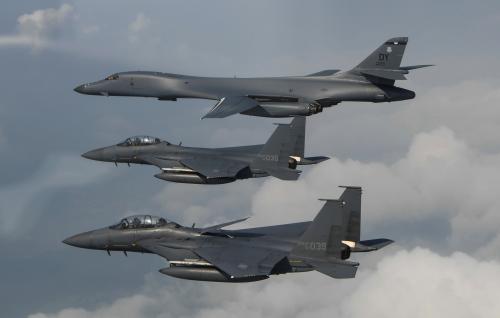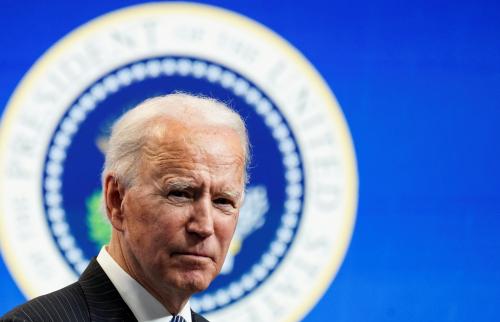President Obama’s plan to pull 10,000 U.S. forces from Afghanistan this year out of the 100,000 presently there – and another 20,000 toward the end of 2012 – is not ideal from the point of view of the existing strategy. Modifications – some of them significant – will be needed relative to what military commanders assumed and intended. The integrated civil-military campaign plan that has been guiding coalition action and planning will need to be changed somewhat, and progress in stabilizing key parts of the country could be slowed, ironically prolonging the war that Mr. Obama has been seeking to begin to end.
The plan will be very problematic if, as some news outlets are leaking, next year’s drawdown must occur by summer’s end. That said, the president’s decision would not be extreme or irresponsible if next year’s drawdown can be extended a few months, until the end of the calendar year or so, since that approach would allow 90,000 American troops to stay through the “fighting season.” In the rest of this essay, I will assume that the latter approach is possible in the hope that it will be adopted next year – whatever the plan might be at the moment.
The new plan will retain a basic focus on counterinsurgency operations – securing the population while helping build up Afghan security forces and governance. It does not move toward adoption of a narrow counterterrorism mission – never realistic anyway – because even counterterrorism takes good intelligence, which tends to dry up if the population (and friendly sources) cannot be protected. Those who favored cutting U.S. forces precipitously this year or next will be disappointed; most American combat forces will stay in Afghanistan well into 2013. Importantly, Mr. Obama’s plan does not require conceding back to insurgents any of the key terrain that has been cleared in recent years at considerable cost in precious life and limb. Given the tenor of the American political debate on both sides of the aisle about debt, deficits and overextension abroad, Mr. Obama’s plan is also perhaps the most robust that realistically could be expected.
There has been considerable progress in Afghanistan in recent times, and this should reassure those Americans who fear that the current strategy is a fool’s errand. On a visit to Helmand province and Kandahar last month, for example, I saw considerable evidence of positive momentum – Afghan forces now providing half of all coalition personnel for combined operations; roads in central, populated areas now safe enough to drive for residents and government officials alike; roughly a 50 percent increase in school attendance in Helmand over just the past year and a half; a 50 percent reduction in poppy harvests as more farmers move to legal crops; a doubling of the number of government positions at the provincial and district levels that are filled and functioning. The killing of Osama bin Laden is also a success of the broader strategy. Still, Mr. Obama had to contend with unpleasant realities concerning lack of full cooperation with allies in Kabul and Islamabad and continued levels of violence in Afghanistan that have not yet declined from historic highs. So he could only go so far in selling the mission as a success and only so far in shoring up American political will to sustain the effort. Again, the plan he has announced is reasonably solid under the circumstances, even if I would have preferred a 2011 drawdown only half as large.
How will this troop drawdown likely influence efforts on the ground? The basic plan has been roughly this: Focus first on the country’s south and southwest (primarily Kandahar and Helmand) in 2009 and 2010, which we have largely done, clearing out insurgent sanctuaries and weapons caches and improving protection of key transportation arteries and urban centers. Alas, assassination campaigns continue, but the Taliban no longer control large populated chunks of the strategically key southern reaches of the country. Then, this year, withstand the expected Taliban counteroffensive in those areas while continuing to build up Afghan security forces and government capabilities so that we can gradually hand off more and more responsibility to the Afghans over the coming one to two years. At the local level, as a Marine officer explained to me last month in Helmand, it typically takes 24 to 30 months from when we first clear an area until we can reduce foreign troop totals, so this process cannot be rushed easily.
As we draw down forces in the south and southwest in late 2011 and 2012, we can use some of the resulting capabilities to reinvest our efforts in the east, which remain underresourced because Mr. Obama provided just 30,000 of the 40,000 additional troops that Gen. Stanley A. McChrystal requested back in 2009. Then we can follow a similar process to clear, hold and build in the east in 2012, enabling the beginning of drawdowns there in 2013 along with the acceleration of troop cuts then in the southern parts of the country.
Put it differently: Though it’s tough to break down the U.S. presence in Afghanistan simply into brigade-sized components, it is roughly accurate to say that we have about five American brigades in the southern part of the country, a bit more than three in the east and a couple more spread through the north and west, for a total of something more than 10. If the five U.S. brigades in the southern areas can be reduced to, say, three in the coming year or so, commanders would like to increase brigade strength in the east from three to four, meaning that net drawdowns over the next six to 12 months would be modest countrywide.
All told, we might then have 95,000 U.S. troops (and perhaps 140,000 total foreign forces) in Afghanistan at the end of 2011, 70,000 GIs at the end of 2012, perhaps 45,000 at the end of 2013 and perhaps 20,000 at the end of 2014 as Afghan security forces assume lead responsibilities throughout the country and we make the transition to a modest longer-term presence. This, at least, is my rough understanding of what the campaign plan has been – prior to the president’s speech.
Mr. Obama’s plan preserves the capacity to do most of this. However, it will require at least one of two risky changes. Either we accelerate the cuts of U.S. and NATO capabilities in the south and southwest, perhaps asking Afghan forces to do more than they are yet capable of attempting and inviting a renewed Taliban attempt at counterattack. Or we forgo the buildup in the east and leave that area a patchwork of relatively safe localities interspersed with dangerous minisanctuaries for extremists. The former option implies a substantial risk of losing our recent gains; the latter runs a risk of stalemate in the east, leaving insurgents able to keep attacking us throughout the country by use of these safe zones in the mountains of Khost, Paktia, Paktika, Nangahar and elsewhere.
Yet it is appropriate to end on a note of guarded optimism. With 90 percent of our forces remaining another 15 to 18 months, we will be able to do roughly 90 percent as much as before. Training and mentoring of Afghan security forces should continue at a robust pace, as their current total strength of 300,000 grows to 350,000 or perhaps 375,000 in the coming 12 to 18 months. The most fraught parts of Kandahar and Helmand need not be turned over immediately to Afghan lead control, even if other parts of those crucial provinces may have to be. Our existing forces in the east, north and west will not have to be cut, although some coalition partners may downsize in those areas in coming months. Afghan forces’ existing and proven abilities to protect Kabul fairly well will not be compromised. Our intelligence networks and special operations forces – so key to taking out extremist leaders – can be maintained at or near current levels. And perhaps we can, if lucky, strike the right balance between reassuring Afghan and Pakistani partners that we are still committed to the mission while also reminding them that we are not staying forever.
As with most things about Afghanistan these days, the president’s speech makes me a bit nervous and again, I will be much more nervous if next year’s drawdown has to happen by September. But on balance, there remains a good case for a measured dose of optimism that we gradually will reach our modest goal of an Afghan government able to control most of its territory and to do so increasingly on its own. Now on to the next challenge: making our political strategy for supporting Afghanistan’s young democracy as generally solid as our military plan.


Commentary
Op-edGauging the Effect of Obama’s Troop Cuts
June 23, 2011